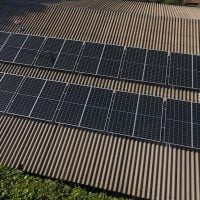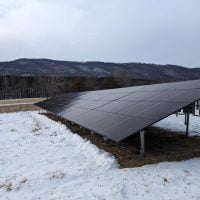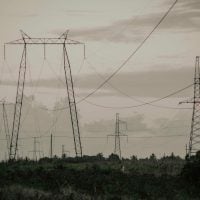The renewable energy sector has witnessed a significant transformation over the past decade, with impact investing emerging as a powerful force driving this change. Impact investors are individuals or organizations that seek to generate measurable social and environmental benefits alongside financial returns. In the context of renewable energy, these investors are particularly interested in projects that not only promise profitability but also contribute to combating climate change, enhancing energy access, and promoting sustainable development.
Understanding the nuances of this landscape is crucial for NGOs and project developers looking to attract funding. The impact investor landscape is diverse, encompassing a range of players from philanthropic foundations to venture capitalists and institutional investors. Each of these entities has its own set of priorities, risk appetites, and investment horizons.
For instance, some may focus on early-stage startups that are innovating in solar technology, while others might prefer established companies with proven business models. By familiarizing themselves with the various types of impact investors and their specific interests, NGOs can tailor their outreach strategies and align their projects with the goals of potential funders. Are You Working on Solar Innovation or Clean Energy Access? Join us to receive updates.
Crafting a Compelling Story for Impact Investors
A compelling narrative is essential when seeking investment from impact investors. Your story should not only highlight the technical aspects of your renewable energy project but also resonate emotionally with potential funders. Start by articulating the problem your project addresses—whether it’s energy poverty in underserved communities or the urgent need to reduce carbon emissions.
Use real-world examples and data to illustrate the significance of the issue, making it relatable and urgent. Once you’ve established the problem, pivot to your solution. Describe your renewable energy project in detail, emphasizing its innovative aspects and how it stands out from other initiatives.
Incorporate testimonials or case studies from beneficiaries or partners to add credibility and depth to your narrative. Remember, impact investors are not just looking for financial returns; they want to be part of a meaningful journey that creates positive change. By weaving a compelling story that connects emotionally and intellectually, you can capture their interest and inspire them to invest.
Identifying the Right Impact Investors for Your Renewable Energy Project
Not all impact investors are created equal, and identifying those whose values align with your renewable energy project is crucial for successful fundraising. Start by conducting thorough research on potential investors, focusing on their investment criteria, previous projects, and areas of interest. Many impact investors have specific themes they prioritize, such as clean technology, community development, or climate resilience.
By aligning your project with their focus areas, you increase the likelihood of attracting their attention. Networking plays a vital role in this process. Attend industry conferences, workshops, and seminars where impact investors are present.
Engage in conversations that allow you to share your project’s vision while also learning about the investors’ priorities. Additionally, consider leveraging platforms that connect entrepreneurs with impact investors, such as online marketplaces or investment networks. By strategically identifying and approaching the right investors, you can enhance your chances of securing funding for your renewable energy initiative.
Articulating the Social and Environmental Impact of Your Renewable Energy Project
Impact investors are particularly interested in understanding the social and environmental benefits of your renewable energy project. To effectively communicate this impact, it’s essential to develop a robust framework for measuring and reporting outcomes. Start by defining clear metrics that align with both your project goals and the interests of potential investors.
For instance, if your project aims to provide solar energy to rural communities, metrics could include the number of households served, reduction in energy costs, or improvements in health outcomes due to cleaner energy sources. In addition to quantitative metrics, qualitative stories can be powerful tools for illustrating impact. Share testimonials from community members who have benefited from your project or highlight partnerships with local organizations that enhance your initiative’s reach and effectiveness.
By presenting a comprehensive picture of both social and environmental impacts, you can demonstrate to impact investors that your project is not only viable but also transformative.
Demonstrating Scalability and Financial Viability to Impact Investors
For impact investors, scalability and financial viability are critical factors in their decision-making process. They want to know that your renewable energy project has the potential for growth and can generate sustainable returns over time. Begin by outlining your business model clearly, detailing how revenue will be generated and what market demand exists for your solution.
Providing market research data can bolster your case by demonstrating a clear understanding of the competitive landscape and potential customer base. Additionally, consider presenting a roadmap for scaling your project. This could include plans for expanding into new markets, diversifying product offerings, or leveraging partnerships to enhance distribution channels.
Highlighting successful pilot projects or initial traction can also serve as evidence of your project’s viability. By effectively communicating both scalability and financial sustainability, you can instill confidence in impact investors regarding the long-term success of your renewable energy initiative.
Building a Strong Team and Partnerships to Impress Impact Investors
A strong team is often seen as one of the most critical components of a successful project in the eyes of impact investors. When presenting your renewable energy initiative, emphasize the expertise and experience of your team members. Highlight their backgrounds in renewable energy technology, project management, finance, or community engagement—whatever is relevant to your project’s success.
A well-rounded team not only enhances credibility but also demonstrates that you have the necessary skills to navigate challenges effectively. In addition to showcasing your internal team, consider discussing strategic partnerships that can bolster your project’s credibility and reach. Collaborations with local governments, NGOs, or academic institutions can provide additional resources and expertise while also enhancing community buy-in.
By illustrating a robust support network around your initiative, you can reassure impact investors that your project is well-positioned for success.
Addressing Risks and Challenges in the Renewable Energy Sector
Every investment comes with risks, and impact investors are keenly aware of this reality—especially in sectors like renewable energy that can be influenced by regulatory changes, market fluctuations, or technological advancements. To build trust with potential funders, it’s essential to proactively address these risks in your discussions. Begin by identifying potential challenges specific to your project and sector, such as policy shifts affecting subsidies or competition from fossil fuels.
Once you’ve outlined these risks, present a clear strategy for mitigating them. This could involve diversifying revenue streams, engaging with policymakers to advocate for supportive regulations, or investing in research and development to stay ahead of technological trends. By demonstrating a thorough understanding of potential challenges and having a proactive approach to managing them, you can instill confidence in impact investors regarding the resilience of your renewable energy initiative.
Leveraging Technology and Innovation to Attract Impact Investors
In an era where technology plays a pivotal role in shaping industries, showcasing innovation within your renewable energy project can significantly enhance its appeal to impact investors. Highlight any cutting-edge technologies or unique approaches you are employing—be it advanced solar panels, smart grid solutions, or innovative financing models like pay-as-you-go systems for low-income households. Emphasizing how these innovations improve efficiency or reduce costs can make a compelling case for investment.
Moreover, consider how technology can enhance transparency and accountability within your project. Utilizing digital platforms for monitoring performance metrics or engaging stakeholders can demonstrate a commitment to responsible management practices. By positioning your renewable energy initiative as forward-thinking and technologically adept, you can attract impact investors who are eager to support innovative solutions that address pressing global challenges.
Developing a Clear and Realistic Financial Plan for Impact Investors
A well-structured financial plan is essential when seeking investment from impact investors. This plan should outline projected revenues, expenses, cash flow forecasts, and funding requirements over time. Be realistic in your projections; overly optimistic estimates can raise red flags for potential funders.
Instead, base your financial assumptions on thorough market research and historical data where possible. Additionally, consider including various funding scenarios in your financial plan—such as best-case, worst-case, and most likely outcomes—to demonstrate preparedness for different market conditions. This level of detail not only showcases your understanding of financial management but also reassures impact investors that you have carefully considered the economic viability of your renewable energy project.
Navigating the Due Diligence Process with Impact Investors
The due diligence process is a critical step in securing investment from impact investors; it involves a thorough examination of your project’s financials, operations, team capabilities, and overall viability. To navigate this process smoothly, prepare comprehensive documentation that provides transparency into every aspect of your initiative. This includes financial statements, legal agreements, operational plans, and any relevant certifications or permits.
Anticipate questions that may arise during due diligence and be ready with clear answers backed by data or case studies. Building relationships with potential investors prior to this stage can also facilitate smoother communication during due diligence; having established rapport can make it easier for them to trust the information you provide. By being well-prepared for this process, you can instill confidence in impact investors regarding the integrity and potential success of your renewable energy project.
Building Long-Term Relationships with Impact Investors for Sustainable Growth
Securing funding from impact investors is just the beginning; building long-term relationships is essential for sustainable growth in the renewable energy sector. After receiving investment, maintain open lines of communication with your funders by providing regular updates on project progress and outcomes achieved against stated goals. This transparency fosters trust and keeps investors engaged in your journey.
Consider involving impact investors in strategic discussions about future directions or challenges faced by your project; their insights can be invaluable given their experience across various sectors. Additionally, seek opportunities for collaboration beyond funding—such as joint initiatives or knowledge-sharing sessions—that can strengthen ties between your organization and its investors. By nurturing these relationships over time, you create a supportive ecosystem that not only benefits your renewable energy initiative but also contributes positively to the broader mission of sustainable development.
When considering how to effectively pitch to impact investors in the renewable energy sector, it’s essential to understand the broader landscape of funding opportunities available for innovative projects. A related article that might be of interest is the Open Call: Women TechEU Project to Support Deep Tech Startups. This initiative highlights the importance of supporting groundbreaking technologies, which can include renewable energy solutions, and provides insights into how startups can secure funding by aligning their projects with the goals of impact investors. Understanding such funding opportunities can enhance your pitch by demonstrating awareness of the market and potential partnerships.









































